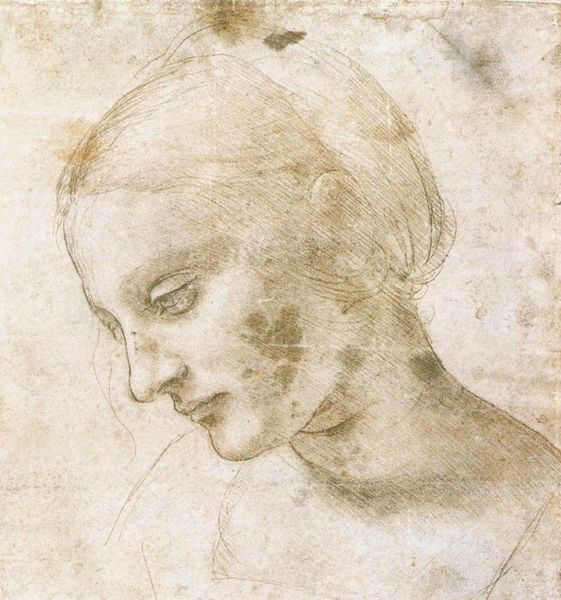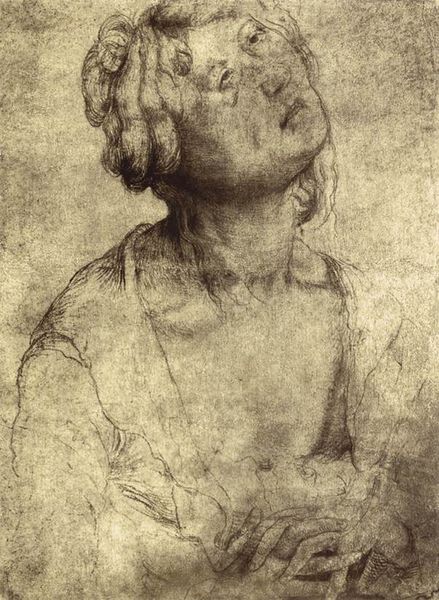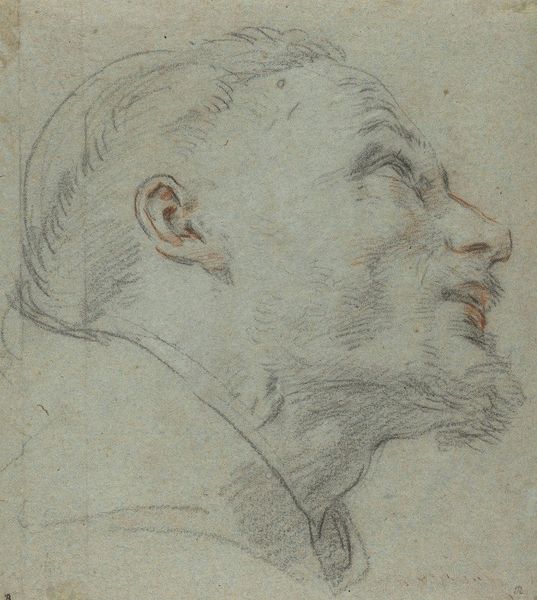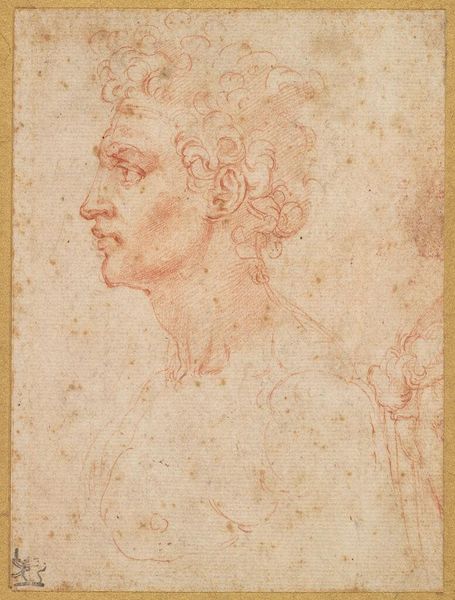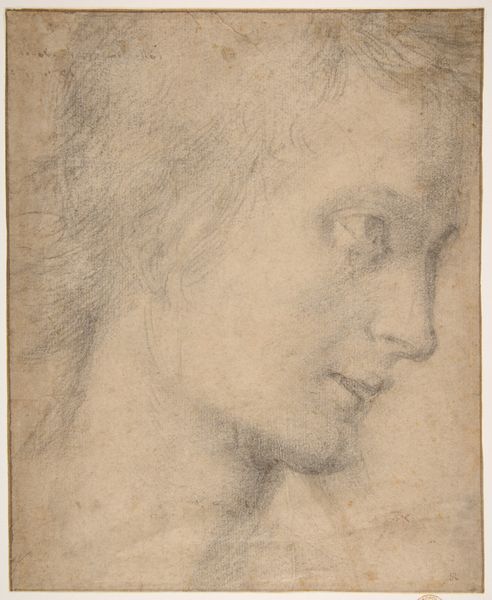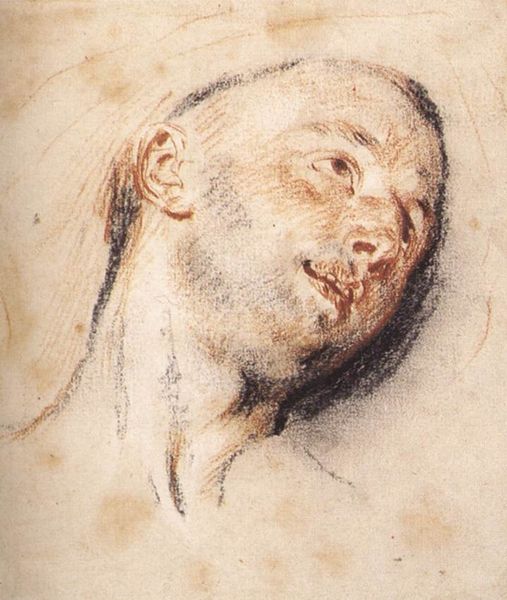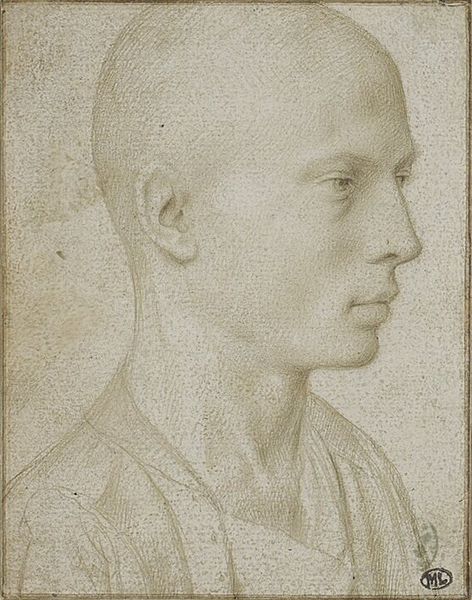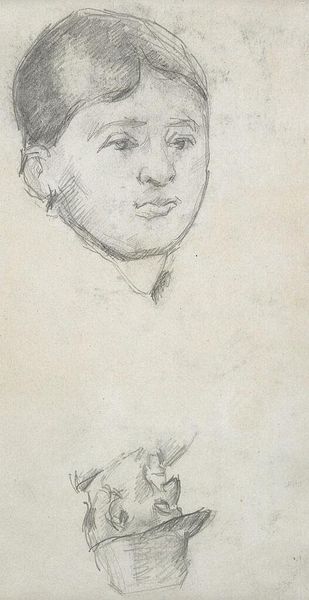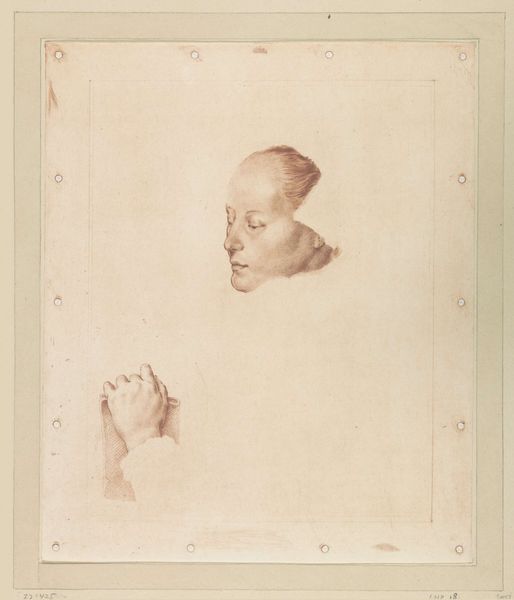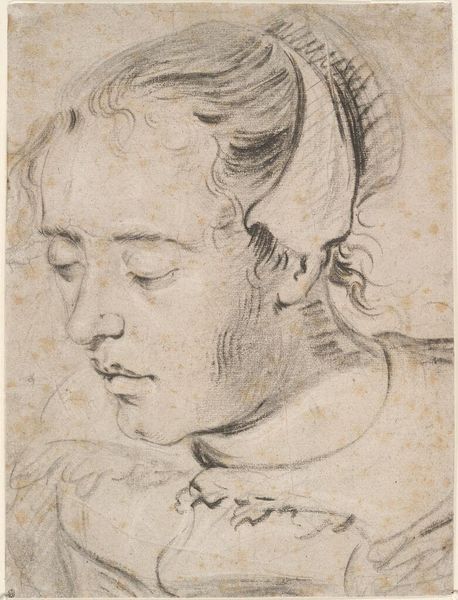
drawing, paper, charcoal
#
portrait
#
drawing
#
figuration
#
paper
#
11_renaissance
#
intimism
#
portrait drawing
#
charcoal
#
northern-renaissance
#
realism
Dimensions: 27.7 x 19.6 cm
Copyright: Public domain
Editor: We’re looking at “Head of a Young Woman,” a charcoal drawing on paper created around 1520 by Matthias Grünewald. There’s an almost haunting quality to the piece. The paper itself looks aged and the charcoal strokes are so delicate. What strikes you about this work? Curator: It’s the materiality of charcoal, isn't it? This drawing reveals the relationship between labor and representation. Consider the source of charcoal—burnt wood, transformed through human effort. That process of transformation mirrors the artist's act of rendering a likeness. It compels us to ask: who controlled the means of charcoal production? Was it a resource readily available to Grünewald, and how did that affect his practice? Editor: That's a perspective I hadn't considered! So, it's less about the sitter and more about the resources the artist used and how those resources were obtained? Curator: Not exclusively, but let’s not divorce the image from its material reality. The texture of the paper, the grain that accepts the charcoal – these are not neutral elements. They actively shape our perception. What social hierarchies were embedded in the paper making process? The rarity of certain pigments influenced artistic decisions. And the time required for its application and preparation represents the artist's labor, as well as potentially the labor of assistants. Editor: It's fascinating to think about the layers of labor and process that went into even a seemingly simple drawing. I suppose understanding the historical context of materials and making truly enriches our experience of art. Curator: Precisely! And by focusing on these often-overlooked aspects, we can challenge established ideas about artistic genius and begin to understand the collaborative nature of artistic creation. We need to be attentive to the resources, labour and cultural factors in our approach to understanding the visual arts.
Comments
No comments
Be the first to comment and join the conversation on the ultimate creative platform.
